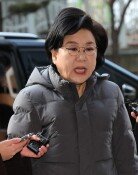Whats Wrong with Koreas Architecture?
Whats Wrong with Koreas Architecture?
Posted May. 28, 2007 03:25,

Artisan spirit is for architects as the Oath of Hippocrates is for doctors. A book written by the architect Kim Jung-hoo is an architecture critique, a rarity in Korea, which reflects on the work of Korean architects.
Based on critical thinking on the countrys architecture, the book deals with the gap between ideals and reality that architects face on the ground, offering a warm-hearted account of how good architecture was created despite such a gap.
The author asks himself of a boring but straightforward question: Whats the problem with Koreas architecture? He reveals negative aspects of the countrys architecture, asking again, Why is Koreas architecture what it is? He delivers both a diagnosis of and a cure for the problems at the same time by providing viable alternatives. It is fair to say that he boldly attempts to tackle the insufficiency of criticism as well, which most Korean architects point out as a problem.
As a critic, he often gets the question: Who is good among architects? Regarding the question, he demonstrates impartiality when discussing both well-known and rising architects, and when offering critical reviews of their attitudes as artists. By doing so, he established a network with most of the architects that he deals with. This also proves his potential as a critic.
His book is based on his firm perspective of architecture, which comes from his deep love of architecture, rather than an attempt to offer all-positive criticism for architecture or to serve as a third-party inspector of the work of architects.
As the country is trying to build a new type of city, there are numerous construction projects going on. Such a situation should make all architects happy, but the reality is different. Large architect offices which account for a mere five percent of all architect offices in the country, and large foreign architect offices dominate more than 90 percent of the city construction projects. This illustrates the extreme divide between rich and poor in Koreas architecture.
The author argues that the countrys architects and architecture theorists should actively study what is going on and find a way to survive.
Above all, he pays attention to the fact that there always seems to be a good owner who understands and supports architects behind good architecture, emphasizing that the implementation of artisan spirit is closely related to the level of development of the cultural level of society.
Architects wrote most notable books related to architecture. There have been some criticisms published, but they failed to gain popularity in the market. In the architecture community, in which critics are a rarity, this book offers a hope for architecture because it signals the emergence of architecture critic Kim Jung-hoo.







